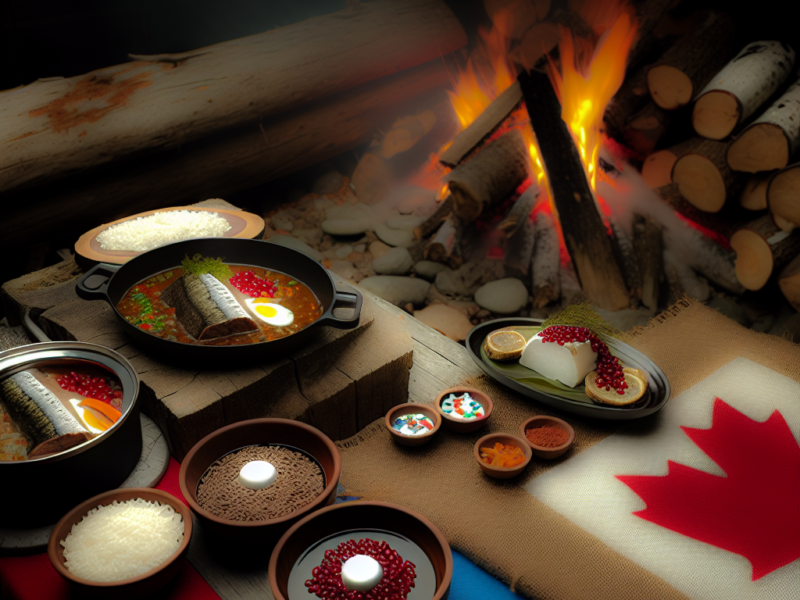Experience the rich and diverse flavors of Indigenous Canadian cuisine by savoring authentic dishes that celebrate our culinary heritage. Discover traditional recipes and ingredients that have been passed down for generations and support Indigenous communities by trying out these delicious dishes. Start your culinary journey now by visiting culinary.1touchfood.com and exploring our collection of Indigenous foods. Let’s celebrate and preserve our cultural heritage through the power of food.
Introduction
Savoring Authentic Indigenous Canadian Dishes is a celebration of the rich culinary heritage of Indigenous peoples in Canada. This unique cuisine is deeply rooted in tradition and reflects the diverse cultures and histories of Indigenous communities across the country. From traditional hunting and gathering practices to modern adaptations, Indigenous Canadian dishes offer a unique and flavorful experience that celebrates the land, culture, and history of the First Nations, Inuit, and Métis peoples. Join us on a journey to discover and savor the authentic flavors and stories behind these traditional dishes.
5 Must-Try Authentic Indigenous Canadian Dishes: A Culinary Journey Through Tradition
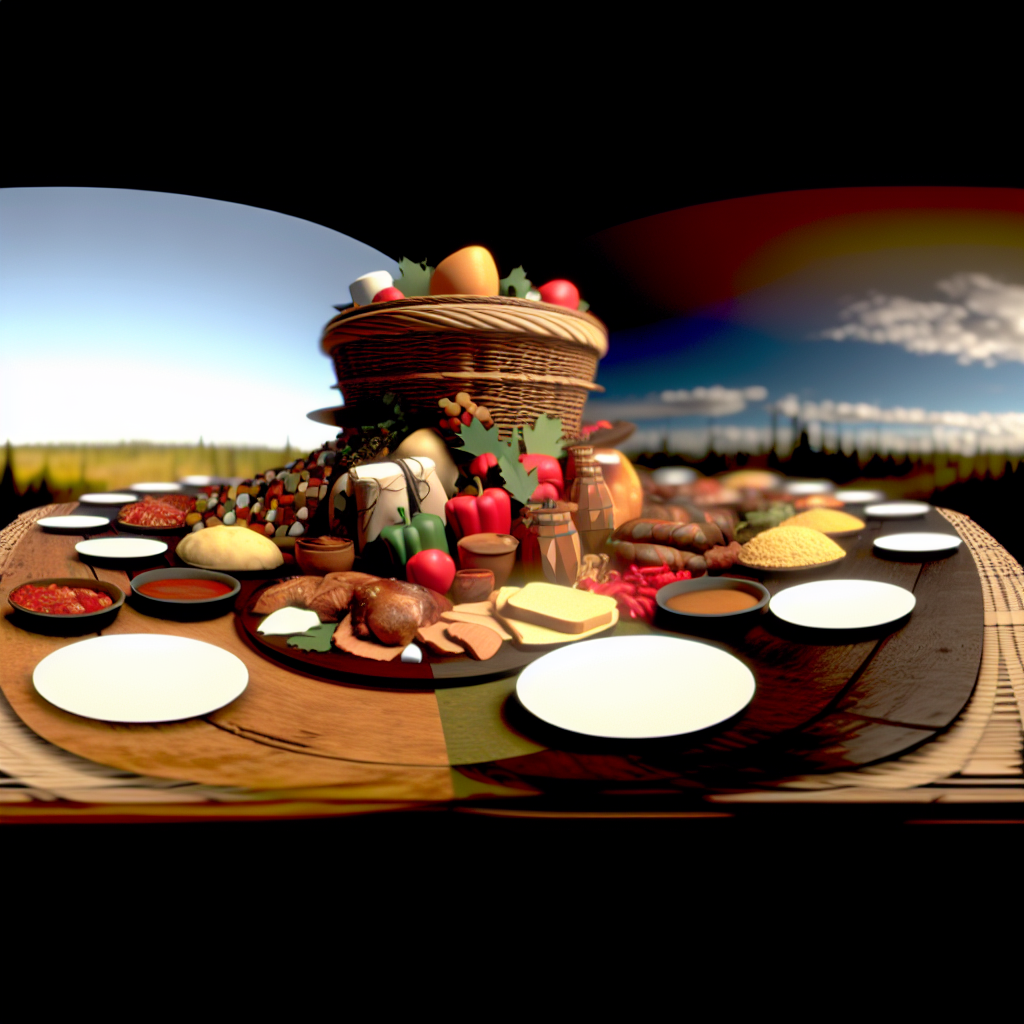
When it comes to experiencing a country’s culture, one of the best ways to do so is through its food. And in Canada, there is a rich and diverse culinary heritage that is deeply rooted in the traditions of its Indigenous peoples. From coast to coast, each region has its own unique dishes that have been passed down for generations, showcasing the bounty of the land and the ingenuity of its people.
So, if you’re looking to savor some Authentic Indigenous Canadian Dishes, here are five must-try dishes that will take you on a delicious culinary journey through tradition.
1. Bannock
Bannock is a staple in Indigenous cuisine and can be found in various forms across the country. It is a type of flatbread that is made with flour, water, and sometimes, animal fat. The dough is then cooked over an open fire or in a pan, resulting in a crispy exterior and a soft, doughy interior. Bannock can be enjoyed on its own or served with various toppings such as jam, honey, or smoked fish. It is a versatile dish that has been a part of Indigenous culture for centuries and is still enjoyed by many today.
2. Pemmican
Pemmican is another traditional dish that has been a part of Indigenous cuisine for centuries. It is a high-energy food that was originally created as a way to preserve meat for long periods of time. Pemmican is made by drying and pounding meat, usually bison or deer, into a powder and mixing it with melted fat and dried berries. The result is a nutrient-dense food that is perfect for long journeys or harsh winters. Today, pemmican is still enjoyed as a snack or added to dishes for extra flavor and nutrition.
3. Wild Rice
Wild rice, also known as manoomin, is a staple in many Indigenous communities, particularly in the Great Lakes region. It is a type of aquatic grass that grows in shallow water and is harvested by hand. Wild rice has a nutty flavor and is often used in soups, stews, and casseroles. It is also a popular side dish and can be cooked with various herbs and spices for added flavor.
Wild rice is not only delicious but also has a rich cultural significance for many Indigenous communities, making it a must-try dish for anyone looking to experience authentic Indigenous cuisine.
4. Salmon
Salmon has been a vital part of Indigenous cuisine for thousands of years, and it continues to be a popular dish today. In the Pacific Northwest, salmon is traditionally cooked over an open fire on cedar planks, giving it a smoky and rich flavor. It can also be cured, smoked, or dried for preservation. Salmon is not only delicious but also a significant part of Indigenous culture, with many communities holding annual salmon feasts to celebrate the return of this prized fish.
5. Saskatoon Berry Pie
No meal is complete without dessert, and in Canada, one of the most beloved Indigenous desserts is Saskatoon berry pie. These small, dark purple berries grow on shrubs and have a sweet and slightly tart flavor. They are often used in pies, jams, and sauces, and are a popular ingredient in many Indigenous dishes. Saskatoon berry pie is a delicious way to end a meal and is a must-try for anyone looking to experience the flavors of Indigenous cuisine.
In conclusion, Canada’s Indigenous cuisine is a celebration of tradition, culture, and the bounty of the land. From bannock to salmon, each dish tells a story and offers a unique and delicious experience. So, the next time you’re looking to savor some Authentic Indigenous Canadian Dishes, be sure to try these five must-try dishes for a culinary journey through tradition.
Exploring the Rich Flavors of Authentic Indigenous Canadian Cuisine: A Guide for Food Enthusiasts
Are you a food enthusiast looking to explore new and unique flavors? Look no further than authentic Indigenous Canadian cuisine. With a rich history and diverse cultural influences, Indigenous Canadian dishes offer a truly unique and delicious culinary experience.
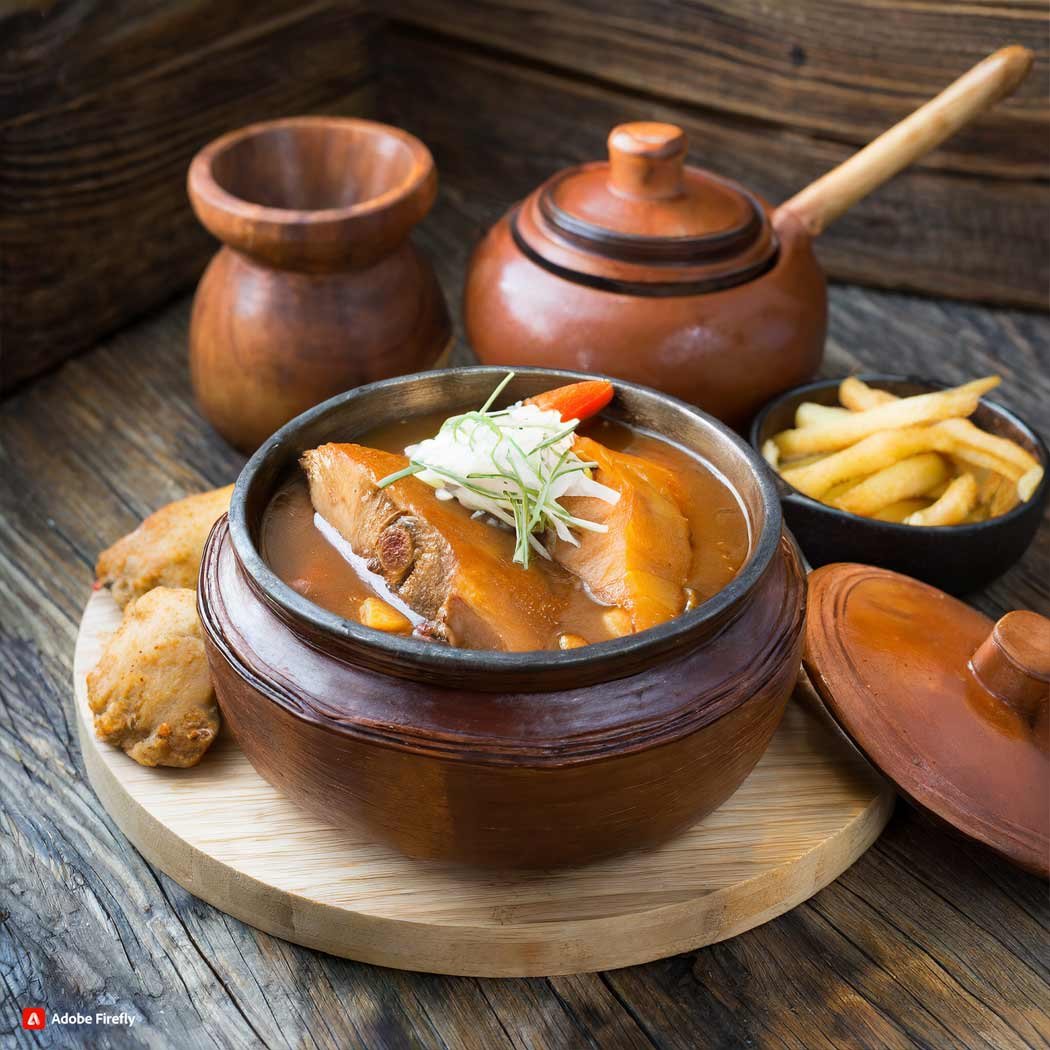
Indigenous Canadian cuisine is deeply rooted in the land and the traditions of the First Nations, Inuit, and Métis peoples. For centuries, these communities have relied on the land and its resources for sustenance, resulting in a cuisine that is deeply connected to nature and the changing seasons.
One of the key elements of Indigenous Canadian cuisine is the use of traditional cooking methods. These methods, such as smoking, curing, and roasting, have been passed down through generations and are still used today. They not only add depth and flavor to the dishes but also serve as a way to preserve food for the long, harsh winters.
Another important aspect of Indigenous Canadian cuisine is the use of locally sourced and seasonal ingredients. The land and its resources play a crucial role in the creation of these dishes, with ingredients such as wild game, fish, berries, and root vegetables being staples in many traditional recipes. This not only adds a unique and authentic flavor to the dishes but also supports sustainable and ethical food practices.
One of the most well-known Indigenous Canadian dishes is bannock. This simple yet versatile bread has been a staple in Indigenous communities for centuries. Traditionally made with flour, water, and animal fat, bannock can be cooked over an open fire or in a pan and can be served sweet or savory. It is often enjoyed with stews, soups, or as a snack with jam or honey.
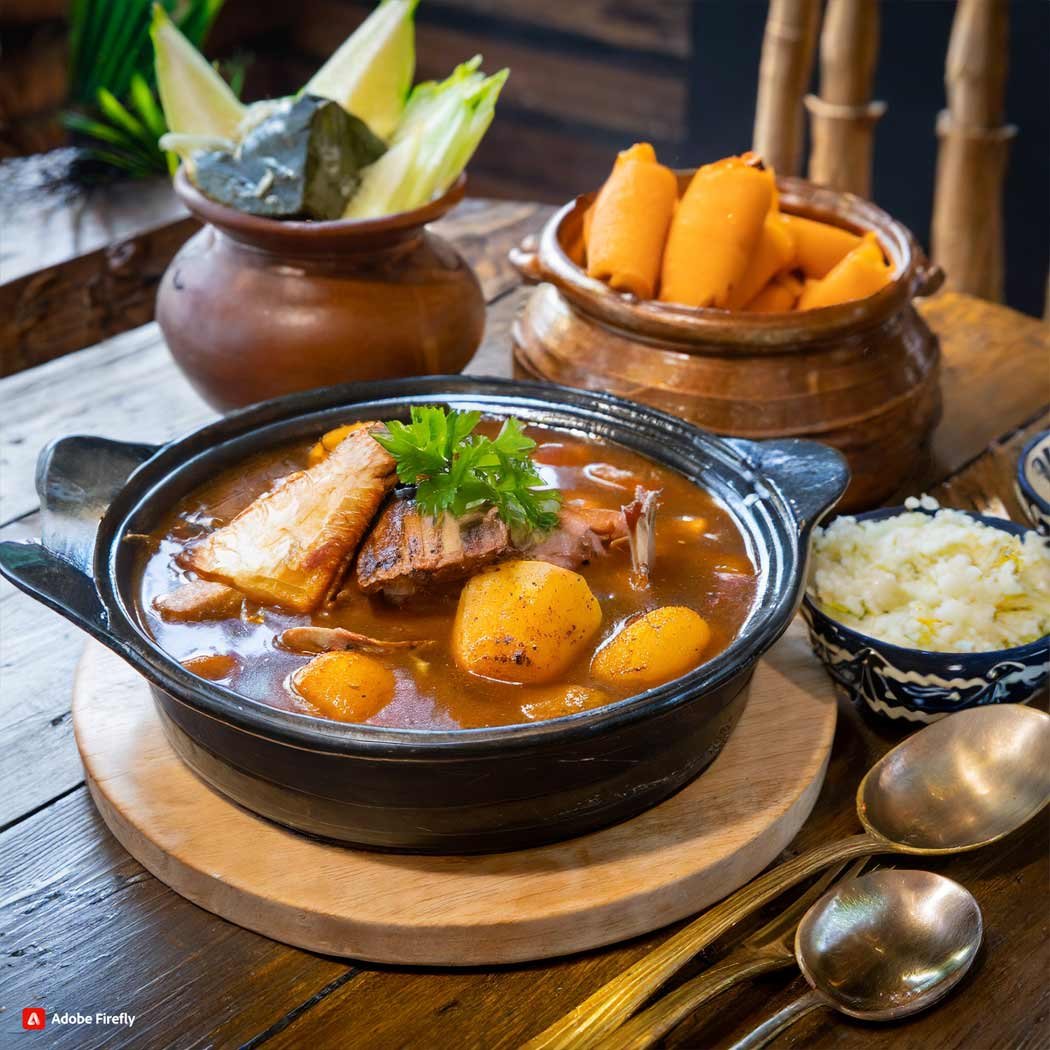
Another popular dish is pemmican, a high-energy food made from dried meat, fat, and berries. Pemmican was a vital source of sustenance for Indigenous communities during long journeys and harsh winters. It is still enjoyed today and is often used in modern dishes such as bison pemmican burgers.
Wild game is also a significant part of Indigenous Canadian cuisine. From moose and caribou to bison and elk, these meats are not only a source of sustenance but also hold cultural and spiritual significance for many Indigenous communities. These meats are often prepared using traditional methods such as smoking or roasting, resulting in tender and flavorful dishes.
Indigenous Canadian cuisine also includes a variety of seafood dishes. With Canada’s vast coastline and numerous lakes and rivers, seafood has always been a significant part of the Indigenous diet. Salmon, trout, and pickerel are just a few of the fish commonly used in traditional recipes. These dishes often incorporate other local ingredients such as wild rice, maple syrup, and berries, creating a unique and delicious flavor profile.
For those with a sweet tooth, Indigenous Canadian cuisine has plenty to offer as well. Maple syrup, a staple in many Indigenous communities, is used in a variety of dishes, from desserts to savory sauces. Wild berries, such as blueberries, raspberries, and cranberries, are also commonly used in desserts and jams.
In recent years, there has been a resurgence of interest in Indigenous Canadian cuisine, with many chefs and restaurants incorporating traditional ingredients and cooking methods into their menus. This not only helps to preserve and celebrate Indigenous culinary heritage but also introduces these unique and delicious flavors to a wider audience.
In conclusion, exploring the rich flavors of authentic Indigenous Canadian cuisine is a celebration of culinary heritage. From traditional cooking methods to locally sourced ingredients, these dishes offer a unique and delicious experience that is deeply connected to the land and its people. So why not savor the flavors of Indigenous Canadian cuisine and embark on a culinary journey like no other?
Preserving Culture Through Food: The Significance of Authentic Indigenous Canadian Dishes in Modern Society
When it comes to food, there is no denying that it plays a significant role in shaping a culture. It is not just about sustenance, but also about tradition, history, and identity. This is especially true for Indigenous communities in Canada, where food is deeply intertwined with their way of life and cultural heritage.
For centuries, Indigenous peoples in Canada have relied on the land and its resources for their sustenance. They have developed a deep understanding and appreciation for the natural world, which is reflected in their traditional dishes. These dishes are not just about nourishment, but they also hold a wealth of cultural significance.
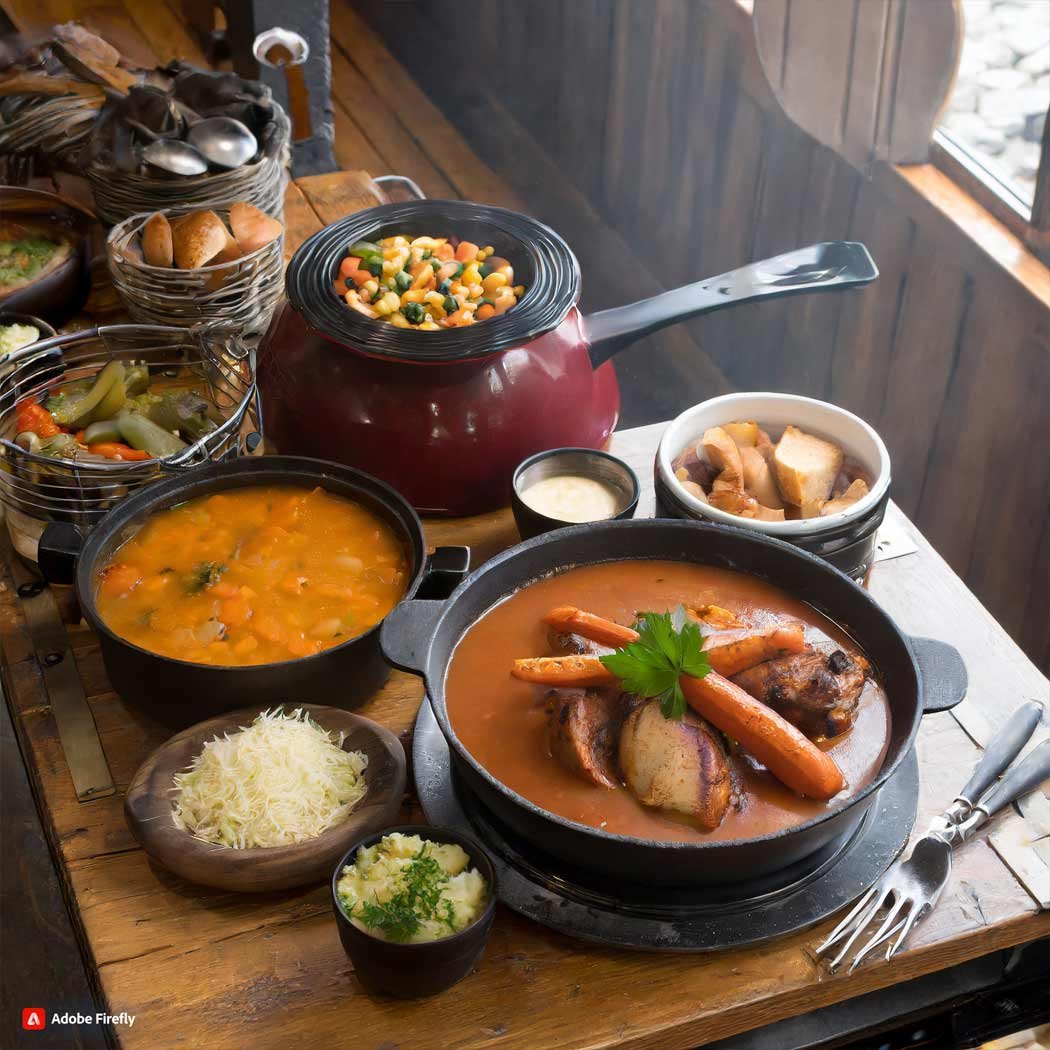
One of the most notable aspects of Indigenous cuisine is its use of locally sourced and seasonal ingredients. This is a reflection of their deep connection to the land and their respect for nature. For example, the Inuit people of the Arctic have a diet that is rich in seafood, such as seal, whale, and fish. This is because these are the primary sources of protein in their region. Similarly, the First Nations people in the Pacific Northwest have a diet that is heavily reliant on salmon, which is a staple food in their culture.
Aside from the use of local ingredients, Indigenous cuisine also incorporates traditional cooking methods and techniques. For instance, the use of fire pits, cedar planks, and clay pots are common in many Indigenous communities. These methods not only add unique flavors to the dishes but also serve as a way to preserve their cultural heritage.
Moreover, Indigenous dishes are often prepared and shared in a communal setting, which is a reflection of their strong sense of community and family. The act of cooking and eating together is a way to pass down traditions, stories, and values from one generation to the next. It is also a way to celebrate and honor their cultural identity.
In recent years, there has been a growing interest in Indigenous cuisine, not just in Canada but around the world. This is due to the efforts of Indigenous chefs and food activists who are working towards preserving and promoting their culinary heritage. Through their work, they are not only showcasing the unique flavors and techniques of Indigenous cuisine but also shedding light on the importance of preserving cultural traditions through food.
One of the most significant impacts of this movement is the recognition and celebration of Indigenous cuisine in the mainstream food industry. Many restaurants and food establishments now offer Indigenous-inspired dishes on their menus, giving people the opportunity to experience and savor these traditional flavors. This not only helps to preserve Indigenous culture but also provides economic opportunities for Indigenous communities.
Furthermore, the popularity of Indigenous cuisine has also led to a deeper understanding and appreciation of Indigenous culture and history. Through food, people are able to learn about the traditions, values, and way of life of Indigenous communities. This helps to break down stereotypes and promote cultural understanding and respect.
In conclusion, Indigenous cuisine is more than just food. It is a celebration of cultural heritage, a way of life, and a means of preserving traditions. As we continue to savor and appreciate the unique flavors and techniques of Indigenous dishes, we are also honoring and preserving the rich and diverse cultures of Indigenous communities in Canada. So the next time you have the opportunity to try an authentic Indigenous dish, remember that you are not just tasting food, but also a piece of history and culture.
Q&A – Authentic Indigenous Canadian Dishes
Q: What are some examples of Authentic Indigenous Canadian Dishes?
A: Some examples of Authentic Indigenous Canadian Dishes include bannock, pemmican, wild game such as moose or caribou, and traditional soups and stews made with ingredients like corn, beans, and squash.
Q: How do Indigenous Canadians typically prepare their dishes?
A: Indigenous Canadians typically prepare their dishes using traditional cooking methods such as smoking, roasting, and boiling. They also incorporate local and seasonal ingredients, as well as traditional herbs and spices.
Q: Why is it important to celebrate Indigenous Canadian culinary heritage?
A: It is important to celebrate Indigenous Canadian culinary heritage because it recognizes and honors the rich history and culture of Indigenous peoples. It also helps to preserve traditional recipes and cooking techniques, and promotes a deeper understanding and appreciation of Indigenous communities and their contributions to Canadian cuisine.
Conclusion for Authentic Indigenous Canadian Dishes
In conclusion, savoring Authentic Indigenous Canadian Dishes is not just about enjoying delicious food, but it is also a celebration of the rich culinary heritage of Indigenous communities. These dishes are a reflection of the land, culture, and traditions of Indigenous peoples, and by savoring them, we are honoring and preserving their unique culinary heritage.
It is important to support and promote Indigenous cuisine, as it not only provides a taste of traditional flavors, but also helps to preserve and pass down cultural knowledge and practices. By embracing and celebrating Indigenous dishes, we can also promote cultural diversity and understanding. So let us all take the time to savor and appreciate the Authentic Indigenous Canadian Dishes and the stories and traditions behind them.
Please follow us on linkedin. You can learn all best canadian food recipes you can check our Culinary 1TouchFood Youtube and Telegram 1TouchFood page. Don’t forget Fighting Obesity Magazine and Radio Cooking.

